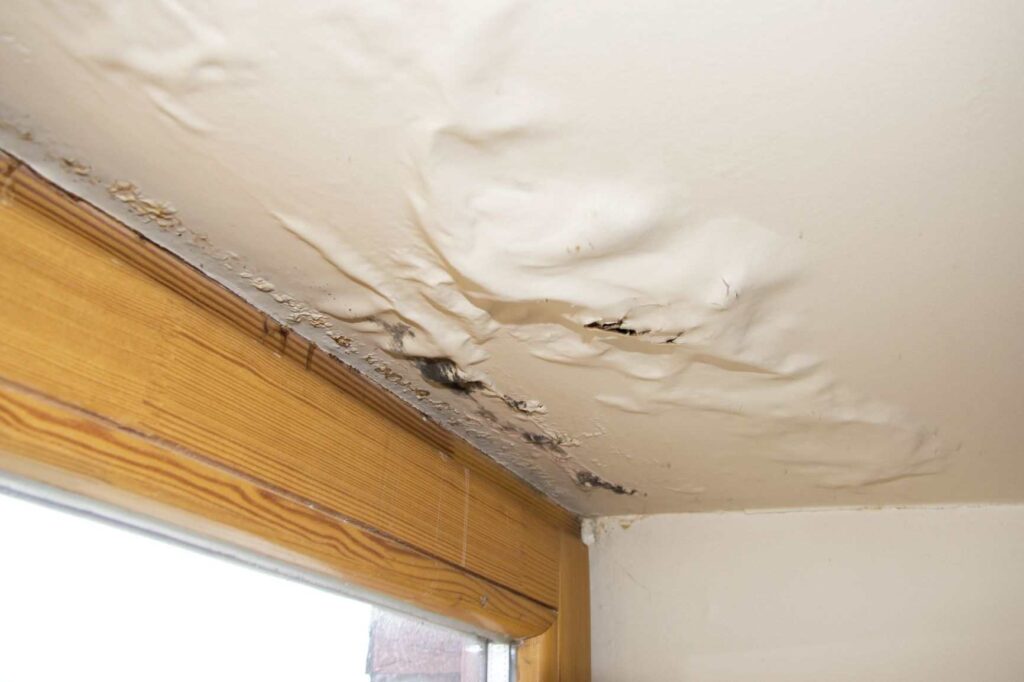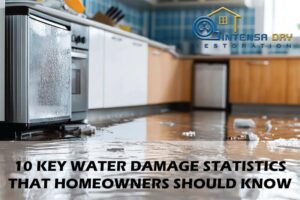Blogs
“Plano’s Top Five Water Damage Restoration Myths Debunked

In the aftermath of water damage, myths surrounding restoration efforts often circulate, potentially leading property owners astray. Understanding the realities of water damage restoration is crucial for effective recovery. In Plano, misconceptions about the process abound, prompting the need to debunk prevalent myths. This article by Instensa Dry aims to shed light on the top five water damage restoration myths in Plano, dispelling misinformation and empowering residents to make informed decisions when faced with the challenges of water damage. By unraveling these misconceptions, homeowners can better navigate the restoration journey and safeguard their properties from the long-term impacts of water-related incidents.

Myth: “Water Damage is Only a Surface Issue”
Contrary to popular belief, water damage is often more than a visible surface problem. Beyond the obvious signs, such as damp walls or ceilings, water can infiltrate structural components and create hidden issues. This myth overlooks the potential for long-term damage within walls, insulation, and even the foundation. Undetected moisture may lead to mold growth, compromising indoor air quality. It is crucial to recognize that water damage restoration involves thorough assessments to identify and address both visible and concealed issues, ensuring comprehensive recovery and preventing lingering problems beneath the surface.
Reality Check: Understanding Hidden Water Intrusion
Amidst the aftermath of water damage, the unseen threats of hidden water intrusion often pose significant challenges. Contrary to common perception, water can seep into the structural integrity of a property, infiltrating unseen spaces like wall cavities and subflooring. This insidious infiltration, if left unaddressed, can lead to structural weakening and foster mold growth. A meticulous inspection is essential, employing advanced techniques like moisture meters and infrared technology to unveil concealed water pockets. Acknowledging the depth of hidden water intrusion is paramount in crafting effective restoration strategies, preventing long-term structural and environmental repercussions.
Myth: “DIY Fixes Are Sufficient”
The misconception that do-it-yourself (DIY) approaches suffice in addressing water damage neglects the complexities of restoration. While quick fixes may offer temporary relief, they often fall short in mitigating underlying issues. Water damage demands professional expertise, as DIY attempts may overlook hidden moisture pockets, risking future complications like mold growth and structural deterioration. Professional restoration services bring the necessary experience, equipment, and methods to comprehensively address water damage, ensuring a thorough and lasting resolution. Relying solely on DIY measures can inadvertently exacerbate the problem, emphasizing the importance of entrusting the restoration process to skilled professionals.
Reality Check: Importance of Professional Restoration Services
Recognizing the critical nature of water damage, the significance of professional restoration services cannot be overstated. Trained experts bring a wealth of knowledge, specialized equipment, and experience to the table, ensuring a swift and thorough recovery. Professionals possess the expertise to assess the extent of damage, identify hidden issues, and implement effective solutions, mitigating long-term consequences. Their proficiency in moisture detection, drying techniques, and mold remediation is unparalleled, providing property owners with peace of mind and a restored environment. Opting for professional restoration services is an investment in a comprehensive and efficient recovery process, safeguarding both property and well-being.
Myth: “Insurance Covers All Water Damage Costs”
While insurance is a crucial safety net, the myth that it universally covers all water damage costs is misleading. Policies vary, and coverage often hinges on the nature and cause of the damage. Flood damage, gradual leaks, or inadequate maintenance might not be covered. Understanding policy specifics, including deductibles and limitations, is imperative. Additionally, timely and accurate documentation of the damage is crucial for successful claims. Relying solely on the assumption that insurance fully mitigates water damage expenses can lead to financial setbacks. It’s essential to grasp policy intricacies and supplement coverage accordingly for comprehensive protection.
Reality Check: Unraveling the Complexities of Insurance Claims
Navigating the aftermath of water damage involves unraveling the intricate web of insurance claims. Contrary to the assumption of a straightforward process, complexities often arise. Understanding policy terms, exclusions, and documentation requirements is paramount. Insurers may scrutinize details, and improper filing can result in claim denials or reduced payouts. Delays in reporting incidents can also impact coverage. A realistic assessment of coverage limitations and proactive communication with insurers are vital. Unraveling the complexities of insurance claims demands diligence, attention to detail, and a strategic approach to secure the most effective financial recovery after water damage.
Myth: “Mold Won’t Develop After Water Damage”
Dismissing the potential for mold growth after water damage is a dangerous misconception. Contrary to this myth, damp or waterlogged environments provide ideal conditions for mold proliferation. Mold spores, present in the air and on surfaces, can rapidly colonize wet areas, posing health risks and structural damage. Overlooking the threat of mold is perilous, as it can thrive within walls, ceilings, and hidden crevices. Immediate and thorough water damage mitigation is essential to prevent mold infestation, underscoring the importance of swift and professional intervention to safeguard both the property and its occupants from the insidious consequences of mold growth.
Reality Check: Addressing the Risk of Mold Growth
Facing the aftermath of water damage necessitates a stark acknowledgment of the genuine risk of mold growth. Contrary to optimistic assumptions, damp environments resulting from water damage create an ideal breeding ground for mold. Swift and comprehensive intervention is crucial to mitigate this risk, involving thorough drying, dehumidification, and targeted mold remediation measures. Ignoring the potential for mold growth invites health hazards and structural deterioration. A proactive reality check emphasizes the need for immediate, professional attention to address the multifaceted challenges posed by water damage, safeguarding occupants and property from the pervasive and often hidden threat of mold.
Myth: “Fast Drying Equals Effective Restoration”
The myth that swift drying alone equates to effective restoration oversimplifies the complexities of water damage recovery. While speed is crucial, a comprehensive approach involves more than rapid drying. Quick fixes may overlook hidden moisture pockets, leading to persistent issues like mold growth and structural damage. Effective restoration demands a meticulous assessment, identifying and addressing both visible and concealed water damage. Professionals employ advanced techniques, ensuring thorough drying while preventing secondary complications. Understanding that a holistic strategy surpasses mere speed is essential in achieving a lasting resolution and preventing long-term consequences in the aftermath of water damage.
Professional Help: Ensuring Effective Water Damage Restoration
When faced with water damage, seeking professional help is paramount for a swift and comprehensive recovery. Trained experts bring specialized knowledge, state-of-the-art equipment, and a strategic approach to the restoration process. Professionals conduct thorough assessments, identifying hidden issues and formulating targeted solutions. Their expertise extends to efficient drying techniques, mold remediation, and structural repairs. Opting for professional assistance ensures a more accurate and effective restoration, mitigating the risk of long-term damage. From insurance coordination to meticulous cleanup, professionals provide a holistic solution, offering peace of mind and a restored environment after water-related incidents.
FAQs:
How do you find hidden water damage?
Conduct thorough inspections of walls, ceilings, and flooring for discoloration, warping, or musty odors to find hidden water damage.
How do you check if your home has a hidden leak?
Check for unexplained stains, soft spots, or musty smells, and use a moisture meter for accurate detection of hidden leaks in your home.
How do you detect water damage?
Regularly inspect vulnerable areas, such as the attic, windows, doors, and roof, and be attentive to changes in color, texture, or unusual odors to detect water damage.
How do you detect a water leak underground?
To detect an underground water leak, monitor your water bill for unexpected increases, look for damp or unusually green areas in your yard, and consider professional assistance using specialized equipment.
Conclusion: Navigating Water Damage Realities in Plano
In debunking prevalent myths surrounding water damage restoration in Plano, a clear understanding emerges — recovery demands informed decisions and professional assistance. Dismissing misconceptions, such as the idea of surface-level issues or DIY adequacy, is crucial. Recognizing the complexities of insurance claims and the genuine threat of mold growth underscores the need for proactive, comprehensive solutions. Swift action coupled with professional expertise ensures not only efficient drying but also addresses hidden challenges. Embracing reality over myths becomes the key to safeguarding properties, emphasizing the importance of a knowledgeable and experienced approach in navigating the aftermath of water damage in Plano.

